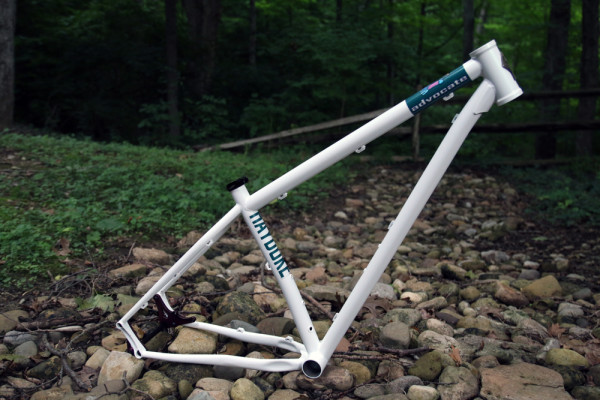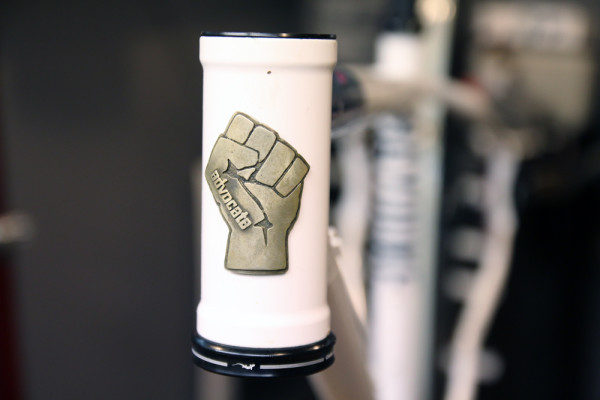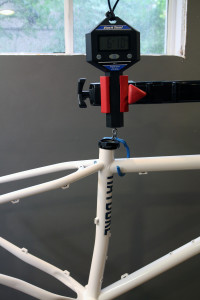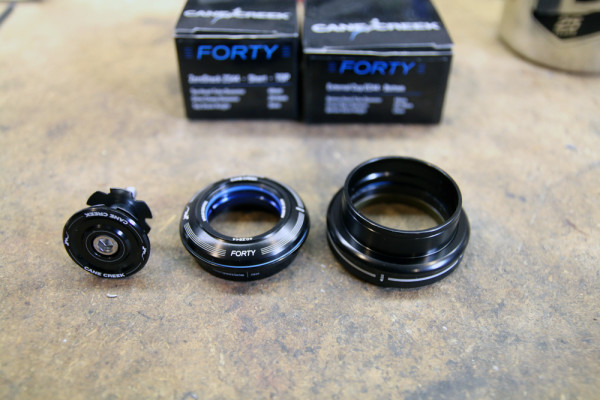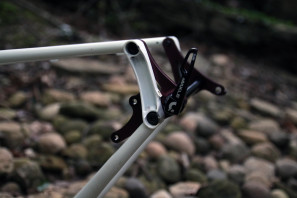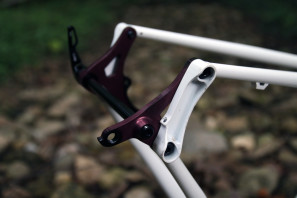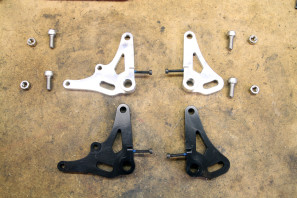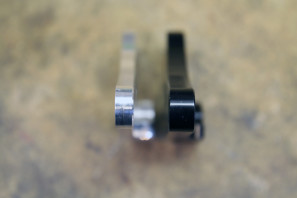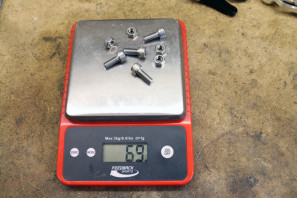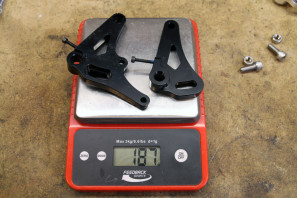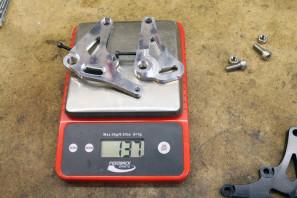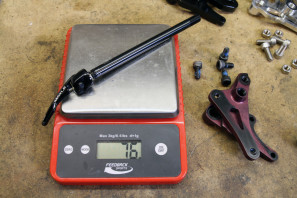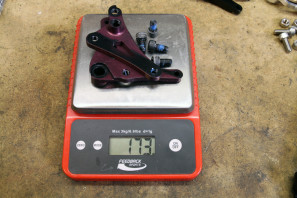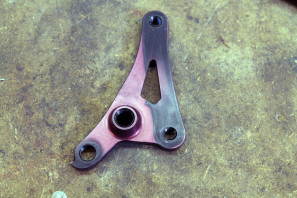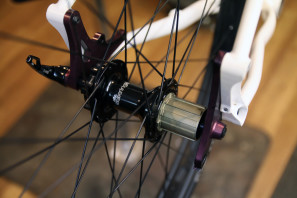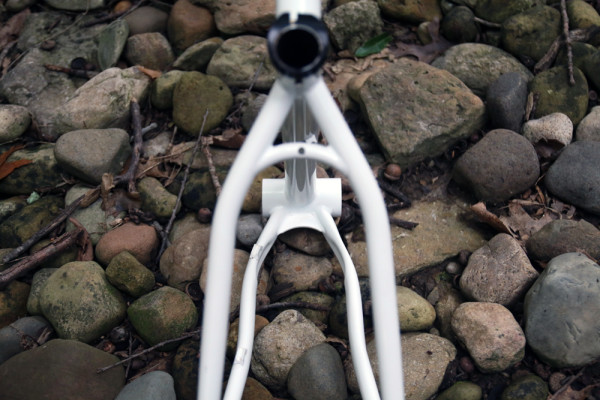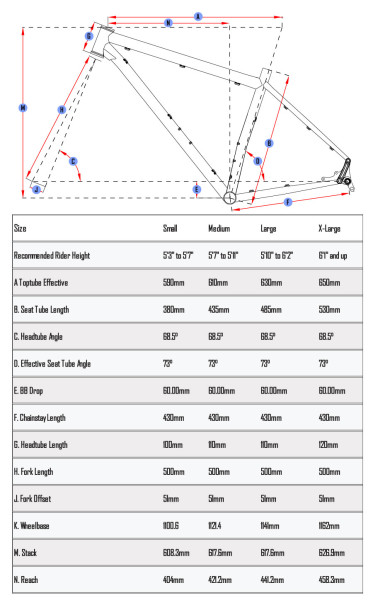We get pitched a lot of new products, but it isn’t often that the company’s business model is unique as the product. When Tim Krueger told us he had something in the works that he was really excited about, we didn’t quite know what to expect. As the former Product Manager for Salsa Cycles, Tim is pretty much a bike industry lifer so there was little surprise that he couldn’t stay away from the little world of bikes for long.
What was a bit surprising was the business model that the aptly named Advocate Cycles would use. Taking advantage of a specific set of rules valid in his home state of Minnesota, Tim and his wife and business partner Odia started a Special Benefits Corporation. The goal? To donate 100% of their after-tax profits to bicycling related advocacy non-profit organizations. Sound far fetched? That’s exactly why we spoke to Tim to pull back the curtains and try and figure out how Advocate plans to make this a reality, and what they have planned for the future…
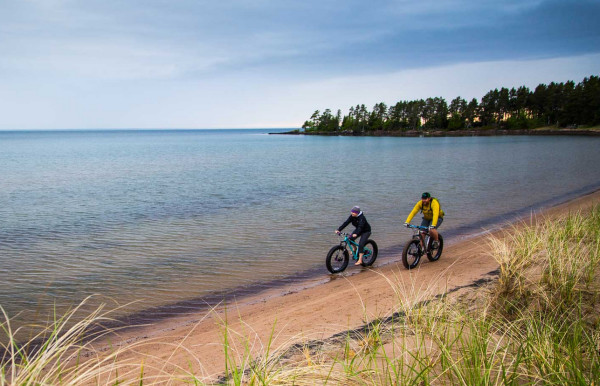
Bikerumor: Hey Tim, so Advocate Cycles started with Plus Sized bikes, has an interesting business model, and aspirations of funneling the profit back into cycling advocacy. How did you come up with that?
Tim: Advocate Cycles right now is my wife Odia, and I. We have been running a race for 6 years now that has put all of the money back into the trails that it takes place on, called the Chequamegon 100. It comes from my personal economic philosophy that everything has value. While the idea of free racing was taking off in grassroots events, we thought we should actually charge, since the act or organizing a race has value, and then give the money to a worthy cause. Professionally, I have been in product development in the bike industry, so we decided the next step was to see if we could carry through the business model to a larger business. And since making desirable bikes is a skill of mine, that is where the idea of Advocate Cycles came from.
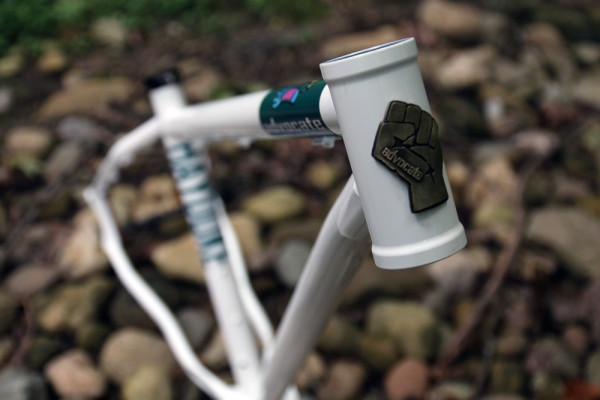
Bikerumor: When it comes to the business model specifically, your critics apparently think you’re either independently wealthy, or stretching the truth about the advocacy part. What do you have to say to the skeptics, and how do you plan to make the concept work long term?
Tim: There are a variety of very deep structures that would take pages to dive into that are not easily understood, unless you are a CPA. I don’t even really understand them, and that’s why I have some good ones helping me out. To directly answer, I am not independently wealthy, I still have a mortgage and school loans that need to be paid every month. And I understand there will be skepticism about our promise, and that is why we chose to go the Specific Benefit Corporation route, instead of just promising it.
One advantage that we do have that makes some of this possible is that I have been in the bike industry for almost 20 years, with a lot of good contacts, and there are some opportunities we took that made this possible, that are not typically available to other people trying to start up a bike company. One way we will try to prove ourselves to people over time is to continually publish our financial records. I am excited about this as well so that people can start to see what the finances of the bike industry look like.
Similarly, there are always people skeptical in general that the big cycling corporations are just making tons of profit, when that is not the case in reality. They will also see that I am not skirting our mission with fancy accounting, or paying myself some high salary. In fact, I will be taking a salary that is about 60% of what I was being paid when I did similar work for QBP.
And to grow the company long term, we are able to use Retained Earnings just like any other company, so that some earnings can be kept within the company to grow. Retained Earnings works like a bank account before taxes, and that you can keep money within the company for growth, it is obligated as profit, so that if it is ever taken out, tax must be paid on it. In the same manner, the same process will be used for the growth of Advocate, and that money will also be fully used towards the mission after it has helped the company with a specific investment or growth initiative.
Additionally, this is factored into our estimate of 7-9% of revenues being posted as profit yearly, so it is not a clever way to take the promised profit and keep it. A method like this is also closely tracked by the IRS, and even the balance of such an account can be regulated by them if they feel it is being used to dodge too much tax (in a traditional business). Like any SBC, the judge and jury of whether we are doing a good job is the consumer, and we are keenly aware of this, which is why we will be going further than required with our promise and transparency.
Very specifically, we hope to hit about $330,000 in earnings this year, and actually be profitable in our first year, which is a feat, even for a normal business. In 2016, our first full calendar year of sales, we are planning on hitting about $800,000 in sales, and our financial infrastructure is already set and ready for this. From there, we will use the methods discussed above to hopefully grow around 10% per year. Some critics are right, we could grow much faster than 10% per year by keeping all of our profits for growth, but that is not what I want to do. In the words of my favorite author Edward Abbey, “growth, for the sake of growth is the ideology of the cancer cell”. A rich world to me is not a large bike company, but a decent, solid company and an improved cycling culture. We will grow in a calculated, reasonable way, while working towards our mission at every step along the way, not just promising it way out in the future.
Bikerumor: And how does the Indiegogo campaign fit into that plan?
Tim: I sunk every penny I had ever saved into starting the company. We have a great method of inventory financing lined up thanks to the early publicity we received at Sea Otter, and it allowed us to move right into complete bikes, which is where my primary forte is in product design. Moving complete bikes in this industry is all about brick and mortar retailers.
Consumer direct business models appear appealing to many startups because of the high margins, but they are hard to do, and are still only a small percentage of units. Simply put, bike shops sell bikes, and the best way for us to get in front of bike shops in the USA is at Interbike. Our primary goal with the Indiegogo campaign was to raise enough funds through pre-selling inventory so that we could afford an Interbike booth space, and we have succeeded.
This was a crucial step in allowing us to hit our goals, and the next step is signing up 30-50 dealers nationwide this fall.
Bikerumor: We’re familiar with a lot of your work previously, but for the sake of those who aren’t – you have a pretty lengthy background in the bike industry, correct?
Tim: Yes, almost 20 years now. Like many people, I started as a teenager without a driver’s license, breaking down cardboard boxes for the dumpster at Stadium Bike in Green Bay, WI. From there, I worked through high school and college at a variety of bike shops, and helped start a few from the ground up. My degree is actually in Psychology, so who knows how I really got here, but after a few years as the Service Manager for New Moon in Hayward, WI, I became the Product Manager for Salsa Cycles, and led the development of all of their modern products such as Spearfish, Mukluk, Vaya, and everything since then, including a few that are not even to market yet. (editor’s note: Saddle Drive is coming soon. Hmm…)
Bikerumor: We’re assuming that experience has helped get Advocate off the ground? You have to know a lot of the right people to make a brand work.
Tim: Yes, for sure. The bike industry is entirely built on relationships. It’s an enthusiast industry, so most people dream of owning a bike company, or at least working for one. This makes suppliers naturally skeptical of newcomers. Is this new guy a real businessman, or just some yahoo who likes bikes? With the contacts and trust I had at every point along the chain, it took me only a matter of months to create what may have taken a fresh startup 2 years to accomplish.
It allowed me to put most of the energy into building the foundation of the company, which is the not-so-fun part of meeting with lawyers, accountants and consultants, because the product and supply chain development came so easily and naturally to me. The other hurdle is getting people to know you exist, so knowing you, and a handful of other journalists helped as well. I think even you would have been much more skeptical had we not known each other for a few years.
Bikerumor: I’ll admit – knowing your background, when I heard you had a new project in the works I was instantly curious, and excited. Who else is involved with the brand at this point?
Tim: Right now, we are a very loose group of people putting in various skills and bit of work. My wife Odia and I do the majority of it, with some help from friends and a few hired consultants. I will be ramping up my time with it into the fall (I am a consultant to a financial services company to pay the bills right now), and we are hiring a full-time employee to start in September.
Bikerumor: You’re also no stranger to bicycle advocacy and organizing bicycling events, right? What are all of the events you’ve either worked on or put together over the years?
Tim: The primary thing that is still going is the Chequamegon 100, but there have been several other rides or races over the years, I worked for a bicycle touring summer camp that taught high schoolers how to go loaded touring and I’ve sat on the board of directors on trails orgs. The sister arm of Advocate Cycles is Advocate Cycling Productions, which is the legal entity of the Chequamegon 100. This year, we also tried to grow the racing idea out to other places. We failed in one community that didn’t see the value of what we were attempting, but succeeded in starting the Hungry Bear 100 gravel race, and the Gitchee Gumee Traverse urban singletrack race in Duluth. The most exciting thing is that there are others taking our example and doing the same thing, such as the Marji Gessick 100 in Marquette, MI so we are assisting with getting them off the ground.
Bikerumor: Do you have any big plans coming up with the Indiegogo funding that Advocate hopefully brings in?
Tim: For sure. We are planning to put about 50% of the funds as straight donations to national non-profits such as IMBA, People for Bikes, Adventure Cycling Association, and more. We are already corporate members of those three, and we hope to add more as we are able. While there is also skepticism about large non-profit orgs, we see them as multipliers. Rather than spend $10,000 on a certain initiative, we can give it to them, and they can use it to lobby and promote, and turn that into a much higher amount for the same thing. All three have excellent track records of creating change.
SBCs are about more than just giving money though, so we will also be giving 10% or more of their time back to each employee to pursue any initiative they desire that aligns with our mission. Further, Odia is a teacher, and she has a keen awareness of underserved groups, so we are developing programs and partnerships as we speak to run some of our own initiatives, domestically and internationally. I also want to encourage other areas of the country to try our grassroots racing method, and I want to provide orgs with the seed money to start these events, especially within the areas of longer adventure and bikepacking races.
Bikerumor: To the rider who doesn’t get Plus or Fat Bikes, Advocate seems to have started out with very niche platforms. Do you have plans for more “traditional” bikes or are you happy keeping it weird (but awesome for those of us who love big tires)?
Tim: Yes, I started with these bikes very strategically. There is still high demand for these niche bikes, and not a lot of brands offering good solutions. I have a lot of experience making several award-winning products in this “weird” area, so I started there. Long term, Advocate Cycles will be a full-line bicycle company with products ranging from $750-$3,000 MSRP.
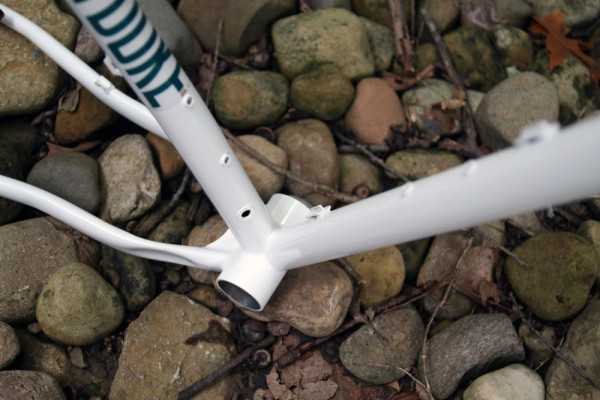
Bikerumor: Will the production Hayduke be any different than the prototype we have in our hands?
Tim: Yes, a bit. The prototype you guys have was from tooling, which means that the majority of development was complete, but there are some fine details. For instance, the geometry, functionality, and weight of the product you have is accurate. But cable guide placements, dropper seatpost internal routing placement, and the dropout plates all have some changes made to production to make the final product fully refined. As well, your decals were digitally printed and put on by me. Production products have a screen-printed decal under the clear coat.

Bikerumor: You just soft launched the new Watchman fat bike for the Indiegogo campaign, but we couldn’t help but notice the new tab on the website for the Lorax. Anything you can tell us about that one?
Tim: Interbike! But we can tell you it will be the first quasi-normal bike in the line.
Bikerumor: Anything else?
Tim: I want people to know that we are realistic with this. I knew coming in that there would be skeptics, and I am OK with that. This idea is not for everyone, and I am OK with that too. I don’t have visions of grandeur that everyone will buy an Advocate and we will all live in some bicycle utopia. But I do know that this is very important to a certain segment of buyers, and that they would rather have their money go to something they believe in, rather than to a large corporation. There are concrete examples that this is true, in shoes, salad dressing, beer, coffee, clothing and many other industries. I am not trying to convince someone to come buy a bike, but rather when someone is in the normal process of needing a new bike, and they are given the choice of a few large brands and us, a small portion of consumers who’s values align will choose us.
Bikerumor: Thanks, Tim. Good Luck.
Tim: Thank you Zach! I really hope you enjoy the Hayduke!
Hands On:
As Tim alluded to above, the Hayduke frame we have in for testing is still technically a prototype. A tooling sample that has already been used and abused as a test and photo mule, the frame is in impressive shape considering. Hopefully that indicates long term durability – which is the impression we get from the frame.
Plus sized bikes aren’t exactly marketed as light weight race machines so the 6lb 10oz (3.01kg) frame weight (medium) shouldn’t be a deal breaker. That weight includes the seat post collar and the full geared dropout system with a Maxxle. If you want lighter, the titanium frame should qualify and at $1,650 through the Indiegogo, it seems like a pretty rad deal. To use a tapered fork with the Hayduke you’ll need a headset with a ZS44/28.6mm upper and EC44/40mm lower cup which is fairly standard for 44mm head tubes. Throw in a reducer plate for the lower bearing and you’ll have a straight 1 1/8″ compatible headset as well.
Obviously there won’t be many 27.5+ forks being sold with straight steerers, but thanks to the dropout system and frame design the Hayduke is just as happy with 29″ wheels. Better still, the rear end is compatible with both 142×12 (silver, above) or 148×12 Boost spacing (black, above). This is critical if you want to run both 29″ and 27.5+ tires since you likely already own a pair of 29″ wheels with 142mm hubs. By simply using thicker plates for the 142mm dropouts, the system places the brake caliper and the chainline in the proper location for non-Boost set ups. If you are going to use the Boost spacing on the rear, it should be matched with a Boost specific crankset with a +3mm offset to the chainring. More on that when we cover the drivetrain later.
The trade off for all that versatility is a dropout system that is heavier than dedicated dropouts, but Advocate capitalized on the opportunity by taking the system one step further with an adjustable single speed compatible option. The modular system will provide geared and single speed options in both 142 and 148 spacing. Geared dropouts are fixed in place with their own bolts, while the single speed dropouts use a set screw to push each plate back to tighten the chain and massive bolts with captured nuts to hold them in place. One of the clever features of the dropout design is that the brake mount is built into the dropout plate so you won’t have to adjust your brake based on the position of the rear wheel.
The geared dropouts use a fixed derailleur hanger for maximum shifting precision since the whole plate can be replaced if you break the hanger. Again, the dropouts above are still very much prototypes but the function will be the same for production (hence the anodization discoloration and raw aluminum).
Built with clearance for 27.5 x 3″ or 29 x 2.4″ tires the frame should have adequate clearance for all but the fattest tires. Even with the curved seat tube, all frame sizes except the small include two water bottle cage mounts. Hayduke frames are front derailleur compatible with a top pull Direct Mount derailleur mounted to an adapter clamp. Final notes include a 31.6mm seat tube and geometry based around a 120mm travel suspension fork with a 51mm offset.
To be offered in both Reynolds 725 Chromoly steel or double butted 3/2.5 titanium, Hayduke frames are still available as part of the Indiegogo campaign starting at $650 for the steel frame and $1,650 for the titanium frame. Those prices will jump slightly after the early bird discounts are gone, and are expected to deliver by September-December of 2015.
More to come as we build up the Hayduke with Project +!
